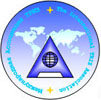TRIZ Features

Jose M. Vincente-Gomila
Predicting new business models with TRIZ
This article from Jose Vincent-Gomila,a well-known TRIZ provider form Spain. His approach to use TRIZ in business applications will help you understand complexity and diversity of the TRIZ methodology. The view of systems is not exclusive to TRIZ, however the integration of system vision, functions described as S-field interactions and Ideality Law of Evolution are about TRIZ. These bundled together can help organizations to value its business model and go one step beyond by defining new business models. For more information click below.
- Details
- Category: TRIZ Features

TRIZ Features
December 2010
Dr. Noel Leon
This article is from a diehard TRIZ practitioner and educator, Dr. Noel Leon, from the Center for Innovation in Products and Technology, Tec de Monterrey. This paper was delivered at TRIZCON2008.
The purpose of this paper is to describe the development process of a new solar collector concept that allows achieving the performance of vacuum tube solar collectors but at the price of flat plate solar collectors. It is shown how the TRIZ methodology helped to solve technical and physical contradictions during the development process.
It is considered that the success of the project was mainly because of the use of TRIZ. This allowed breaking paradigms that made solar collectors expensive or not very efficient.
- Details
- Category: TRIZ Features
TRIZ Features
November 2010
Charoenchit Panpetch
THEORY OF DEVELOPING CONCEPTUAL BASES: THE PARTICULAR APPROACH TO EVOLUTION
In this paper, Mr. Panpetch provides a detailed scholarly view of evolution. The Theory of DCB defines how evolution works in terms of the single process and how it becomes different. This Theory can provide the explanation to all kinds of evolution. He then presents the systematic tools for each activity of evolutionary studies.
Abstract
Among the great diversity and similarity of the universe, philosophers, scientists, theologians seek to relate one phenomenon to another and to recognize the causes and effects of phenomena. In this way, they have developed explanations for the changing of the seasons, the movements of the sun and stars, the structure of matter, the history of life on Earth, and many other occurrences.
Alternative models, processes, formulas, and theories in many areas are developing to help our understanding of how the universe works. The theory of evolution is one of the most important ideas ever generated by the application of scientific methods to the natural world.
Evolutionary theories incorporate a large body of scientific facts, laws, tested hypothesis, and logical inferences but it is much harder to support scientifically all things in one process, one model, one formula, or one framework. This is because of the great diversity and similarity among the universe, the development of an explanation for the change of everything is so difficult. Today, we see evolution plays in many theories having explanation can not be applied to different kinds of evolution.
For instance, biological evolution provides an explanatory framework for the processes of natural change, but that it can not be applied uncritically to cultural phenomena, the evolutionary formulas for making a universe and making life can enable everything- with the exceptions of man-made things, such as computer or buildings, and of complicated things, such as wooden boxes with nails in them, require thought, intelligence, and careful workmanship.
This research underscores the importance of studying a theory that can explain how evolution works in terms of one process, one model, or one framework and that can be applied to all kinds of evolution. The DCB theory of evolution is now required.
- Details
- Category: TRIZ Features
TRIZ Features
![]() September 2010
September 2010
Determining Qualitative Parameters Using TRIZ for Estimating IP Value of Intangibles
One of the primary issues faced by the knowledge economy is the valuation of intellectual assets. Intellectual assets are generally categorized into, Intellectual property (Patents, Trademarks, and Copyrights etc.), explicit knowledge (specific business related processes, methodologies and procedures etc.), and human resources. Value may be defined as the worth or the economic benefit that accrues for the intellectual assets to the owner over a time period. Valuation of any of these intangible asset is essential for financial reporting, M&A, commercialization, securitization, sale, calculating damages on IP infringement etc. However, valuation of each of these intellectual assets and most typically, valuation of technology assets/patents poses a problem unique to it and can be complex in nature depending on the situation. Further, the absence of organized trading in intangibles has been a major hindrance to their recognition as actual intangible assets in financial reports. Currently, there are a number of methods commercially available for valuation of patents or technology. However, these methods do not take into account the intrinsic value or technological merit of any technology asset or patents and therefore, companies usually prefer to adopt conventional techniques financial methods of valuation, which we believe is incomplete and does not reflect the real value of technological intangible assets. Hence, it is essential for companies to consolidate the IP value of an intangible asset along with the financial value to derive the actual value of the asset. In this paper, the authors use the TRIZ methodology to derive the factors and parameters that influence the IP value of a technological asset and more particularly, a patent and then use this factor along with the financial value to determine the actual projected value of an intangible asset.
- Details
- Category: TRIZ Features
TRIZ Features
June 2010
 John W. Stamey, Coastal Carolina University, Conway, SC This email address is being protected from spambots. You need JavaScript enabled to view it.
John W. Stamey, Coastal Carolina University, Conway, SC This email address is being protected from spambots. You need JavaScript enabled to view it.
Richard Peterson, North Carolina State University, Raleigh, NC This email address is being protected from spambots. You need JavaScript enabled to view it.
TRIZ in Technology Education: Perceptions of Future Teachers
The support TRIZ provides for creativity during the invention process makes it ideally suited for the field of Technology Education. Technology education provides instruction in the content areas of manufacturing, communication, transportation and construction. As creativity has long been an important part of the technology education curriculum in middle schools and high schools, a study of the perceptions of TRIZ by future technology education teachers was seen to be a first step toward the introduction of TRIZ into the curriculum. A group of masters-level and doctoral-level students in Technology Education students at North Carolina State University received a TRIZ workshop which included training on the methodology as well as time to use the techniques to solve problems particular to technology education. This article reports the perceptions of future technology education teachers about TRIZ and its potential use in the classroom.
- Details
- Category: TRIZ Features
TRIZ Article


New Tools for Design
Cal Halliburton and Victoria Roza
“True inventions require the determination to solve multiple problems in order to overcome contradictions and yield creative solutions.”
In this classic article, Cal Halliburton has condensed and simplified the core of TRIZ application for everyone to easily digest and apply. Cal is a teacher by trade and he spent years studying TRIZ from various TRIZ Masters. His style is simple and effective. I am sure that you will enjoy this article and learn a great deal in the effort.
- Details
- Category: TRIZ Features
TRIZ Features
 April 2010
April 2010
Len Kaplan
Attempt of Scientific Forecast
--In this 3rd article, Len Kaplan has selected numerous "local crises" that affect individual industries and areas of human activity. He attempts to describe the situation and provides answers using TRIZ to some of these situations. Read each situation and see what kind of solution concepts you could develop to resolve the problem.
- Details
- Category: TRIZ Features
TRIZ Feature
 March 2010
March 2010
Len Kaplan
Contemporary Crisis
A friend of mine from Russia wrote me recently, “Len, I’m interested in other questions, and these questions should be interesting to you as US citizen, namely: influence of postindustrial world on countries, how the informational technologies affect evolution of human civilization, role of economy, including transformations of economy nowadays and in future, role of financial institutions in life of contemporary civilizations.”
- Details
- Category: TRIZ Features
TRIZ Features
 February 2010
February 2010
Young Ju Kang
The Automotive industry is one of the most competitive areas and there are several technical issues like global warming and depletion of crude oil. Also the period for developing new car becomes shorter and shorter. This situation makes car industry desires more efficient innovation and it is why Hyundai-Motors introduced TRIZ into their R&D parts.
TRIZ covers several areas of R&D projects. Usually it is used for patent circumvention, system and process improvement, cost reduction, and new development of products. There are several steps for solving problem. All the categories of TRIZ need analytical stage.
The most popular tool for analysis is function analysis (FA). If the system is stable and existing, FA is very powerful method for understanding system. But if the project is for New Development of the System or technical forecasting, it is not suitable to use FA directly. In this paper, new modeling method will be discussed for new product development.
- Details
- Category: TRIZ Features
TRIZ Features
 January 2010
January 2010
Howard Smith
There isn’t a business that doesn’t want to be more creative in its thinking. According to one study, 75% of CEOs of the fastest growing companies claim their strongest competitive advantage is unique products and services and the distinct business processes that power them to market—innovation by another name. In another survey, Boston Consulting Group reported that 90% of organizations believe innovation is a strategic priority for 2004 and beyond. The trend was also confirmed by research undertaken by consulting firm Strategos. Their conclusion: the importance of innovation in all sectors is growing, and growing significantly.
In today’s ever-changing economic landscape, inventiveness has become a key factor influencing strategic planning. IT guru Kevin Kelly once said, “Wealth flows directly from innovation … not optimization … wealth is not gained by perfecting the known.” Efficiency, while a necessary condition for business success, is insufficient to sustain growth over decades. While new levels of efficiency and productivity require inventive solutions, the goal of efficiency is not the same as the goal of innovation.
- Details
- Category: TRIZ Features
TRIZ Feature
 December 2009
December 2009
José M. Vincente Gomila
The view of systems in not exclusive to TRIZ, however the integration of a systemic vision, funtions described as s-fields interactions and the ideality law of eolution are about TRIZ, and these bundled together can help organizations to value better its business model and so try to go one step beyond by easily defining new business models and assessing better the new technologies that may enable them.
The author tries to show this approach by analysing several cases, two known cases plus a still existing case whis is yet to evolve.
- Details
- Category: TRIZ Features
TRIZ Features
 October 2009
October 2009
Valeri V. Souchkov
Today we need to continuously innovate if we want to maintain leadership – either we want to lead business or people. It means that we need to develop and possess relevant thinking skills to be able to constantly come up with new winning ideas. But what are the differences between “regular” and “power” thinking skills?
In the article, Valeri would like to summarize 14 differences based on many years of observations. Certainly, there are more differences. However his goal was to identify the most universal, important and influential ones which form entire categories of differences.
- Details
- Category: TRIZ Features
TRIZ Features
 September 2009
September 2009
TRIZfest-2009
Over 100 TRIZ specialists from 14 countries participated in TRIZfest-2009, which took place July 25-29 2009 in Saint Petersburg, Russia. The participants delivered over 50 papers in English and Russian. Both languages were served with synchronous translation.
- Details
- Category: TRIZ Features
TRIZ Features
 August 2009
August 2009
Isak Bukhman and Stephen Brown
To identify the right problem and solve it quickly, or to invent at the highest level of creativity, engineers need to leverage scientific and technical knowledge, often beyond their immediate personal experience or field of expertise. Engineers must be able to find appropriate concepts from among thousands of scientific effects and from tens of millions of articles, patents, and other sources of information.
- Details
- Category: TRIZ Features
Read more: Computer-Assisted Problem Analysis Via Semantically Extracted Experience
TRIZ Features
 July 2009
July 2009
Ashfaq Ishaq, PhD
This month's article is not a true TRIZ Feature article but goes to the Super-system of why we need TRIZ in all of our lives.
This article was written by Ashfaq Ishaq, Ph D, FRSA Executive Director, International Child Art Foundation.
Creativity is a quintessential attribute of human beings. When combined with our ability to record and benefit from accumulated knowledge, it makes us the highest-order species on the planet. Humans have not yet achieved our full creative potential, however, primarily because every child’s creativity is not properly nurtured. The critical role of imagination, discovery and creativity in a child’s education is only beginning to come to light, and even within the educational community, many still do not appreciate or realize its vital importance.
- Details
- Category: TRIZ Features
TRIZ Features

June 09
Prakasan Kappoth
Product development is becoming more important even for service organizations across the world. The companies, especially from the low cost destination like India and China are playing an important role in realizing product faster. Technology companies, including start-ups, move portions of design and development to service companies across the globe. The expectation from these organizations is now to provide the services for identifying the suitable market segment, creating new features and in every phase in the product conceptualization.
- Details
- Category: TRIZ Features
 March, 2009
March, 2009
Dr. Noel Leon Rovira
To select the winners, expert criteria had been used up to now, which in many cases was strongly influenced by subjectivity.
- Details
- Category: TRIZ Features
Read more: Methodology for the Evaluation of the Innovation Level of Products and Processes
 February, 2009
February, 2009
Donald Coates
- Details
- Category: TRIZ Features
